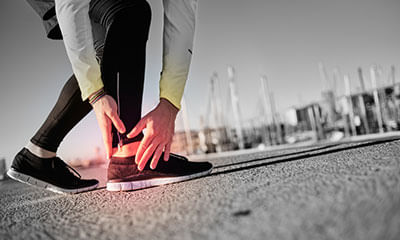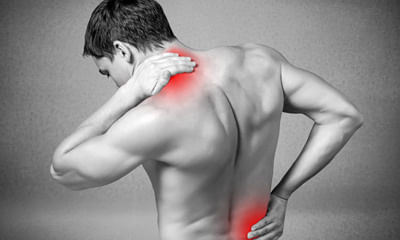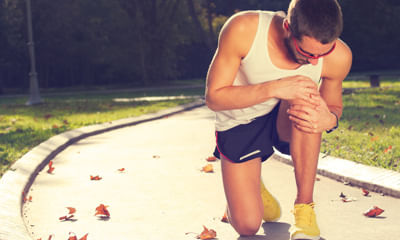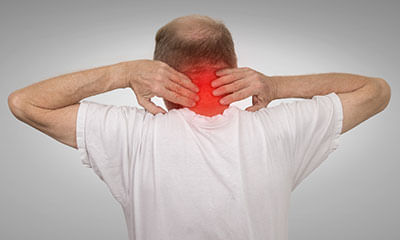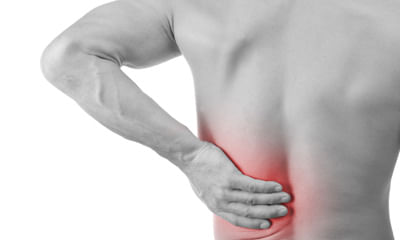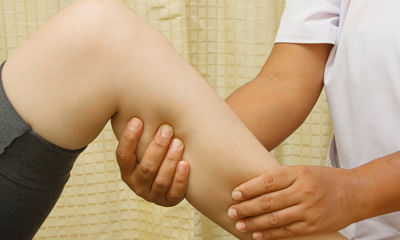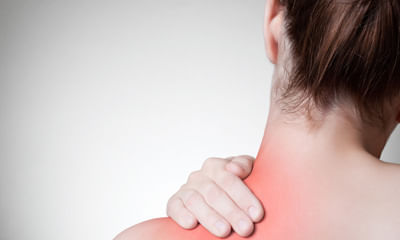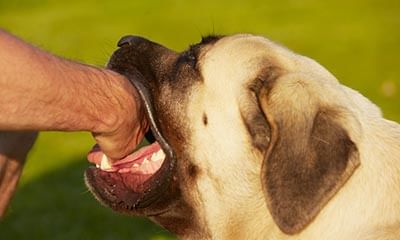Finger Pain And Swelling Causes
My right hand fingers got sprained while lifting heavy objects. Have no sensation. Using flexabenz zel. I do not want to ...
Ask Free Question
You need to use finger splint as a method of skin traction (the most effective method for jammed fingers). No need to take painkillers, it will subside itself. For getting back the sensation you need to opt for some ayurvedic neuropromotive remedies. You may consult me privately or whatsapp on mobile for a proper ayurvedic consultation.
For the last couple of years I have pain in finger nail of middle finger of left hand. Mere touching causes extreme unbe ...
Ask Free Question
Your pains in finger nails. Homeopathy has very effective and reliable treatment for your problem. No side effects. Please take homeopathic medicine, preliminary dose, rhus tox 200-once daily in the evening for 3 days. Book online appointment/consultation with me -(commencing from text consult rs 149, audio/ phone-rs 300) for further more comprehensive prescription and treatment.
Doctor my mother has osteoarthritis is it curable its in initial stage is it curable and may I know how long it takes to ...
Ask Free Question
Symptoms of arthritis symptoms of osteoarthritis may include joint pain and progressive stiffness that develops gradually. Symptoms of may include painful swelling, inflammation, and stiffness in the fingers, arms, legs, and wrists occurring in the same joints on both sides of the body, especially upon waking up in the morning. Knee arthritis can be painful and debilitating. For osteoarthritis (oa) of the knee, self-care early on can often help significantly. It is important to stretch and strengthen the surrounding leg muscles to provide more support and reduce stresses around the joint. The following best bet exercises will help you get started on your path to feeling stronger, more flexible and more active. Remember: exercise should not be painful – if you experience pain, discontinue and consult with your physician. Advice: 1.must take adequate rest 2.apply hot water with mild heat with cotton towel 3.avoid cross leg sitting and long time standing 4. Put the small size chair under the ankle during sitting in the chair for leg elevation 5.do the exercise given below 2 times per day 1.quadriceps setting exercise helps to strengthen the quadriceps muscle (the big muscle on the front of the thigh), an important stabilizer of the knee. Lie on your back with the leg you want to exercise straight. Place a small rolled towel underneath the knee. Slowly tighten the muscle on top of the thigh (quadriceps) and push the back of the knee down into the rolled towel. Hold contraction for 5 seconds and then slowly release, resting 5 seconds between each contraction. Perform 3 sets of 10 repetitions, 1 time daily. 2.straight leg raise also helps to strengthen the quadriceps muscle. Lie on your back with the leg you want to exercise straight. The other knee should be bent to support your lower back. Tighten the muscle on the top of your thigh and lift to the level of your other knee. Slowly lower. Perform 3 sets of 10 repetitions, 1 time daily. Knee pain •patellar tendinitis: •risk factor •a combination of factors may contribute to the development of patellar tendinitis, including: •physical activity. •running and jumping are most commonly associated with patellar tendinitis. Sudden increases in how hard or how often you engage in the activity also add stress to the tendon, as can changing your running shoes. •tight leg muscles. Tight thigh muscles (quadriceps) and hamstrings, which run up the back of your thighs, can increase strain on your patellar tendon. •muscular imbalance. •if some muscles in your legs are much stronger than others, the stronger muscles could pull harder on your patellar tendon. This uneven pull could cause tendinitis. •chronic illness. •some illnesses disrupt blood flow to the knee, which weakens the tendon. Examples include kidney failure, autoimmune diseases such as lupus or rheumatoid arthritis and metabolic diseases such as diabetes. •complications •if you try to work through your pain, ignoring your body's warning signs, you could cause increasingly larger tears in the patellar tendon. Knee pain and reduced function can persist if you don't tend to the problem, and you may progress to the more serious patellar tendinopathy. •prevention •to reduce your risk of developing patellar tendinitis, take these steps: •don't play through pain. As soon as you notice exercise-related knee pain, ice the area and rest. Until your knee is pain-free, avoid activities that put stress on your patellar tendon. •strengthen your muscles. Strong thigh muscles are better able to handle the stresses that can cause patellar tendinitis. Eccentric exercises, which involve lowering your leg very slowly after extending your knee, are particularly helpful. •improve your technique. To be sure you're using your body correctly, consider taking lessons or getting professional instructions when starting a new sport or using exercise equipment. •therapy •a variety of physical therapy techniques can help reduce the symptoms associated with patellar tendinitis, including: •patellar tendon strap. A strap that applies pressure to your patellar tendon can help to distribute force away from the tendon and direct it through the strap instead. This may help relieve pain. •iontophoresis. This therapy involves spreading a corticosteroid medicine on your skin and then using a device that delivers a low electrical charge to push the medication through your skin. •platelet-rich plasma injection. This type of injection has been tried in some people with chronic patellar tendon problems. Studies are ongoing. It is hoped the injections might promote new tissue formation and help heal tendon damage. •probably your stamina would've gone down due to over use of the joints and the metabolic activity is more due to running. You need to consume good protein diet so that your body will act as a reservoir. It will help you to fight against rather than affecting one particular area of your body for eg. Knee joint. For knee ligament pain or inflammation you need to keep ice which will help you to prevent the inflammation progressing further. •patellofemoral pain syndrome •usually fully relieved with simple measures or physical therapy. It may recur, however, if you do not make adjustments to your training routine or activity level. It is essential to maintain appropriate conditioning of the muscles around the knee, particularly the quadriceps and the hamstrings. •there are additional steps that you can take to prevent recurrence of patellofemoral •they include: •wearing shoes appropriate to your activities •warming up thoroughly before physical activity •incorporating stretching and flexibility exercises for the quadriceps and hamstrings into your warm-up routine, and stretching after physical activity •increasing training gradually •reducing any activity that has hurt your knees in the past •maintaining a healthy body weight to avoid overstressing your knees •joints, ie. In the upper limbs if the pain is present in the fingers/wrist and in the lower limbs it the pain is present in the toes/ ankle, then we shall definitely say it is rheumatic arthritis. •if your proximal joints (ie. Shoulder, hip & knee has pain) then you can pour hot (warm) water in that area to reduce the inflammation. If you have pain in the distal joints ie. Wrist, fingers, ankle, toes then you can wear either elbow brace or wrist brace which will help you to feel warm and very protective. And also immerse the distal joints in the hot water tub which will help you to reduce the pain. •knee pain during driving or watching movie. •it might due to lack of movements in the knee while the joints are immobilized during driving and while watching movies. It is important that you need to have movements in and around the knee so that the blood flow will not be disturbed. •knee ligament laxity•if you have problem in your legs then it might be due to ligament laxity where your legs would become very weak due to the old ligament injury and that should be treated immediately. •wear knee cap so that you will feel firm while walking or climbing stairs.•this is a general strain and for this you can follow these measures: one keep a pillow right under the knee while sleeping, next is you can keep ice in the painful area for about 5--10 minutes, if pain still persists you can stretch your body by twisting the waist on both sides how we used to do in the school drill similarly you can try! one time you can do hot water fermentation that would help to reduce the muscle strain. •legs becoming numb and also pain is there when the patient walks for 10-15 minutes?•it looks like you are anaemic. If you feel that the legs are becoming numb then keep your legs warm which is important, probably you can wear mcr chappals inside the house/ socks inside the house. Put a door mat when ever you sit so that you will feel comfortable. Also pour warm water in the legs which would help you to get better circulation. •knee pain. If you are overweight, losing weight will also help to reduce pressure on your knee. Knee pain this is a general knee pain and for this you can follow these measures: one keep a pillow right under the knee while sleeping, next is you can keep ice in the painful area for about 5--10 minutes, it looks like you are is important to check that. Anaemia always leads to the symptoms of being tired and also having body pain though there may not be any pathological reasons for knee pain. With knee exercises you will definitely feel better and muscles must be strengthened .•don't play through pain. As soon as you notice exercise-related knee pain, ice the area and rest. Until your knee is pain-free, avoid activities that put stress on your patellar tendon. •strengthen your muscles. Strong thigh muscles are better able to handle the stresses that can cause patellar tendinitis. Eccentric exercises, which involve lowering your leg very slowly after extending your knee, are particularly helpful. •improve your technique. To be sure you're using your body correctly, consider taking lessons or getting professional instructions when starting a new sport or using exercise equipment. •therapy •a variety of physical therapy techniques can help reduce the symptoms associated with patellar tendinitis, includingback pain it looks like you are anaemic. If you have back pain after you sit for long hours then it is due to your haemoglobin levels as it is important to check that. Anaemia always leads to the symptoms of being tired and also having back / leg pain though there may not be any pathological reasons for back pain. It looks like you are anaemic. And also you have to check with your vitamin and calcium, if the bones are weak then automatically the pain gets triggered more as there is less severity of the painbe strengthened 1.resisted terminal knee extension: make a loop with a piece of elastic tubing by tying a knot in both ends. Close the knot in a door at knee height. Step into the loop with your injured leg so the tubing is around the back of your knee. Lift the other foot off the ground and hold onto a chair for balance, if needed. Bend the knee with tubing about 45 degrees. Slowly straighten your leg, keeping your thigh muscle tight as you do this. Repeat 15 times. Do 2 sets of 15. If you need an easier way to do this, stand on both legs for better support while you do the exercise. 2•standing calf stretch: stand facing a wall with your hands on the wall at about eye level. Keep as arthritis is very common that you get generally bilaterally. Ice therapy would definitely help to reduce the inflammation. We also advise you to use knee cap which would help to prevent the knee from damaging further and also to maintain the quadriceps muscle tone •stretching exercises. Regular, steady stretching exercises can reduce muscle spasm and help lengthen the muscle-tendon unit. Don't bounce during your stretch. 3•strengthening exercises. Weak thigh muscles contribute to the strain on your patellar tendon. Exercises that involve lowering your leg very slowly after extending it can be particularly helpful, as can exercises that strengthen all of the leg muscles in combination, such as a leg press.•this is a general knee pain and for this you can follow these measures: one keep a pillow right under the knee while sleeping, next is you can keep ice in the painful area for about 5--10 minutes, it looks like you are is important to check that. Anaemia always leads to the symptoms of being tired and also having body pain though there may not be any pathological reasons for knee pain. With knee exercises you will definitely feel better and muscles must be strengthened.
I just get a cramp in my shoulder after 7 month of multi in-directional instability and now it’s paining and I think the ...
Ask Free Question
1.pendulum stretch do this exercise first. Relax your shoulders. Stand and lean over slightly, allowing the affected arm to hang down. Swing the arm in a small circle — about a foot in diameter. Perform 10 revolutions in each direction, once a day. As your symptoms improve, increase the diameter of your swing, but never force it. When you're ready for more, increase the stretch by holding a light weight (three to five pounds) in the swinging arm. 2. Towel stretch hold one end of a three-foot-long towel behind your back and grab the opposite end with your other hand. Hold the towel in a horizontal position. Use your good arm to pull the affected arm upward to stretch it. You can also do an advanced version of this exercise with the towel draped over your good shoulder. Hold the bottom of the towel with the affected arm and pull it toward the lower back with the unaffected arm. Do this 10 to 20 times a day. 3. Finger walk face a wall three-quarters of an arm's length away. Reach out and touch the wall at waist level with the fingertips of the affected arm. With your elbow slightly bent, slowly walk your fingers up the wall, spider-like, until you've raised your arm as far as you comfortably can. Your fingers should be doing the work, not your shoulder muscles. Slowly lower the arm (with the help of the good arm, if necessary) and repeat. Perform this exercise 10 to 20 times a day. 4. Cross-body reachsit or stand. Use your good arm to lift your affected arm at the elbow, and bring it up and across your body, exerting gentle pressure to stretch the shoulder. Hold the stretch for 15 to 20 seconds. Do this 10 to 20 times per day. 5. Armpit stretch using your good arm, lift the affected arm onto a shelf about breast-high. Gently bend your knees, opening up the armpit. Deepen your knee bend slightly, gently stretching the armpit, and then straighten. With each knee bend, stretch a little further, but don't force it. Do this 10 to 20 times each day. Starting to strengthen as your range of motion improves, add rotator cuff–strengthening exercises. Be sure to warm up your shoulder and do your stretching exercises before you perform strengthening exercises. 6. Outward rotationhold a rubber exercise band between your hands with your elbows at a 90-degree angle close to your sides. Rotate the lower part of the affected arm outward two or three inches and hold for five seconds. Repeat 10 to 15 times, once a day. 7. Inward rotation stand next to a closed door, and hook one end of a rubber exercise band around the doorknob. Hold the other end with the hand of the affected arm, holding your elbow at a 90-degree angle. Pull the band toward your body two or three inches and hold for five seconds. Repeat 10 to 15 times, once a day.
Seronegative spondylitis problem and anterior uveitis problem and sexual health issue n. ...
Ask Free Question
Psoriatic spondylitis psoriatic spondylitis is the medical term for a type of psoriatic arthritis that affects the spine and the joints in the pelvis. The symptoms may develop anywhere between the pelvis and the neck. People with psoriatic spondylitis may experience pain, inflammation, and stiffness in their neck and lower back. Symptoms •back pain. •pain and swelling in other joints (including hips, knees, shoulders, ankles, feet, elbows, hands, and wrists) •dactylitis (the sausage-like swelling of the toes and fingers) •reduced range of motion of the low back, spine, and pelvis. •psoriasis. •chronic fatigue. •osteoporosis. The most common medications for psa are often also used to treat ankylosing spondylitis, including nonsteroidal anti-inflammatory drugs (nsaids), disease-modifying antirheumatic drugs (dmards), sulfasalazine (azulfidine), immunosuppressants, and biologic medications, such as tnf inhibitors.
I'm 37 year old, I suffering seronegative spondylitis, acute anterior uveitis, alopecia hair problem, sexual problem my ...
Ask Free Question
Psoriatic spondylitis psoriatic spondylitis is the medical term for a type of psoriatic arthritis that affects the spine and the joints in the pelvis. The symptoms may develop anywhere between the pelvis and the neck. People with psoriatic spondylitis may experience pain, inflammation, and stiffness in their neck and lower back. Symptoms •back pain. •pain and swelling in other joints (including hips, knees, shoulders, ankles, feet, elbows, hands, and wrists) •dactylitis (the sausage-like swelling of the toes and fingers) •reduced range of motion of the low back, spine, and pelvis. •psoriasis. •chronic fatigue. •osteoporosis. The most common medications for psa are often also used to treat ankylosing spondylitis, including nonsteroidal anti-inflammatory drugs (nsaids), disease-modifying antirheumatic drugs (dmards), sulfasalazine (azulfidine), immunosuppressants, and biologic medications, such as tnf inhibitors.
I'm 21 years old, and I have pain in the joints of my hands. If I join my hands together, it provides some relief to the ...
Ask Free Question
Shoulder / hand pain-right hand pain it might be due to carpal tunnel syndrome, where the pain will be felt in the wrist. You can do hot water fermentation/ wax therapy for shouldtreat carpal tunnel syndrome as early as possible after symptoms start. Take more frequent breaks to rest your hands. Avoiding activities that worsen symptoms and applying cold packs to reduce swelling also may help. Other treatment options include wrist splinting, medications and surgery. Splinting and other conservative treatments are more likely to help if you've had only mild to moderate symptoms for less than 10 months. Lifestyle and home remedies these steps may provide temporary symptom relief: •take short breaks from repetitive activities involving the use of your hands. •lose weight if you are overweight or obese. •rotate your wrists and stretch your palms and fingers. •take a pain reliever, such as aspirin, ibuprofen (advil, motrin ib, others) or naproxen sodium (aleve). •wear a snug, not tight, wrist splint at night. You can find these over-the-counter at most drugstores or pharmacies. •avoid sleeping on your hands. If pain, numbness or weakness recurs and persists, see your doctor. Alternative medicine integrate alternative therapies into your treatment plan to help you cope with carpal tunnel syndrome. You may have to experiment to find a treatment that works for you. Always check with your doctor before trying any complementary or alternative treatment. •yoga. Yoga postures designed for strengthening, stretching and balancing the upper body and joints may help reduce pain and improve grip strength. •hand therapy. Early research suggests that certain physical and occupational hand therapy techniques may reduce symptoms of carpal tunnel syndrome. •ultrasound therapy. High-intensity ultrasound can be used to raise the temperature of a targeted •area of body tissue to reduce pain and promote healing. Research shows inconsistent results with this therapy, but a course of ultrasound therapy over several weeks may help reduce symptoms.
My mother is 47 age she got a pain her feet and heel and also there is done swelling in her heel part when there is cold ...
Ask Free Question
Heel pain apply ice use an ice pack or cold compress on your foot for 10 to 15 minutes at a time. This is especially beneficial at the end of a long day or when you’ve spent a lot of time on your feet. Or, roll a frozen water bottle under your foot. This method incorporates a bit of massage, relieving tightness in the bottom of your foot. Massage. Massaging the arch of your foot helps to relieve pain and promote mobility. Use your fingers and knuckles to deeply massage your foot for 1 to 5 minutes at a time. One technique is to place both thumbs at the center line of your arch and move them to the outer edges of your feet. Inserts. Use cushion inserts in your shoes for additional support and cushioning. Inexpensive options can be purchased off the shelf. Wear supportive shoes with thicker soles and extra cushioning for additional support that can help to reduce tension in the plantar fascia. Kinesiology tape can be used to improve arch and heel support. Night splints. Many people find quick and effective results by using night splints. They can be worn while sleeping to stretch the plantar fascia. They help to keep the plantar fascia relaxed and prevent you from pointing your feet down. Exercise foot flex use your hand to pull your toes back toward your shin. Hold this position for about 30 seconds .do each side two to three times. Toe towel grab place a small towel under your foot. Curl your toes to grip the towel. Raise the front of your foot off the floor. Hold this position for a few seconds. Release the towel as you lift up your toes and spread them as far apart as possible. Heel and calf stretch to do this stretch: 1.stand facing a wall. 2.place your hands on the wall and move one foot back as far as you can comfortably. Toes on both feet should be facing forward, heels flat, with a slight bend in your knees. 3.lean into the stretch and hold for 30 seconds. You should feel the stretch in your back leg. 4.change legs and repeat. 5.do this stretch twice for both legs. Golf ball roll roll a golf baell under your right foot. Continue for up to 1 minute. Do each foot two to three times.
Due to horse bite I have swelling in my middle finger I have taken rabies injection and all anti biotic course with pain ...
Ask Free Question
I would like to see a picture of the site of the bite and how long is the problem. It is the body's self response called inflammation which causes swelling at the site of injury. Also in long term cases there could be a growth of bacteria and infection causing swelling. There are medications which could help you reduce swelling. Consult me so that I could prescribe you.
I recently had a routine blood check up and the uric acid level is 9.4 prior to the test I had not had my medicine febux ...
Ask Free Question
Stretching and strengthening exercises or use of specialized devices may provide symptom relief. These include: physical therapy. A physical therapist can instruct you in a series of exercises to stretch the plantar fascia and achilles tendon and to strengthen lower leg muscles, which stabilize your ankle and heel. A therapist might also teach you to apply athletic taping to support the bottom of your foot. Night splints. Your physical therapist or doctor might recommend that you wear a splint that stretches your calf and the arch of your foot while you sleep. This holds the plantar fascia and achilles tendon in a lengthened position overnight and facilitates stretching. Orthotics. Your doctor might prescribe off-the-shelf or custom-fitted arch supports (orthotics) to help distribute pressure to your feet more evenly. Injections. Injecting a type of steroid medication into the tender area can provide temporary pain relief. Multiple injections aren't recommended because they can weaken your plantar fascia and possibly cause it to rupture. More recently, platelet-rich plasma has been used, under ultrasound guidance, to provide pain relief with less risk of tissue rupture. Lifestyle and home remediesto reduce the pain of plantar fasciitis, try these self-care tips: maintain a healthy weight. Lose weight if you're overweight or obese to minimize stress on your plantar fascia. Choose supportive shoes. Avoid high heels. Buy shoes with a low to moderate heel, good arch support and shock absorbency. Don't go barefoot, especially on hard surfaces. Don't wear worn-out athletic shoes. Replace your old athletic shoes before they stop supporting and cushioning your feet. If you're a runner, buy new shoes after about 400 to 500 miles of use. Change your sport. Try a low-impact sport, such as swimming or bicycling, instead of walking or jogging. Apply ice. Hold a cloth-covered ice pack over the area of pain for 15 to 20 minutes three or four times a day or after activity. Or try ice massage. Freeze a water-filled paper cup and roll it over the site of discomfort for about five to seven minutes. Regular ice massage can help reduce pain and inflammation. Stretch your arches. Simple home exercises can stretch your plantar fascia, achilles tendon and calf muscles. Prevention: maintain a healthy weight. Choose supportive shoes. Don't wear worn-out shoes. Heel pain apply ice use an ice pack or cold compress on your foot for 10 to 15 minutes at a time. This is especially beneficial at the end of a long day or when you’ve spent a lot of time on your feet. Or, roll a frozen water bottle under your foot. This method incorporates a bit of massage, relieving tightness in the bottom of your foot. Massage. Massaging the arch of your foot helps to relieve pain and promote mobility. Use your fingers and knuckles to deeply massage your foot for 1 to 5 minutes at a time. One technique is to place both thumbs at the center line of your arch and move them to the outer edges of your feet. Inserts. Use cushion inserts in your shoes for additional support and cushioning. Inexpensive options can be purchased off the shelf. Wear supportive shoes with thicker soles and extra cushioning for additional support that can help to reduce tension in the plantar fascia. Kinesiology tape can be used to improve arch and heel support. Night splints. Many people find quick and effective results by using night splints. They can be worn while sleeping to stretch the plantar fascia. They help to keep the plantar fascia relaxed and prevent you from pointing your feet down. Exercise foot flex use your hand to pull your toes back toward your shin. Hold this position for about 30 seconds .do each side two to three times. Toe towel grab place a small towel under your foot. Curl your toes to grip the towel. Raise the front of your foot off the floor. Hold this position for a few seconds. Release the towel as you lift up your toes and spread them as far apart as possible. Heel and calf stretch to do this stretch: 1.stand facing a wall. 2.place your hands on the wall and move one foot back as far as you can comfortably. Toes on both feet should be facing forward, heels flat, with a slight bend in your knees. 3.lean into the stretch and hold for 30 seconds. You should feel the stretch in your back leg. 4.change legs and repeat. 5.do this stretch twice for both legs. Golf ball roll roll a golf baell under your right foot. Continue for up to 1 minute. Do each foot two to three times.

